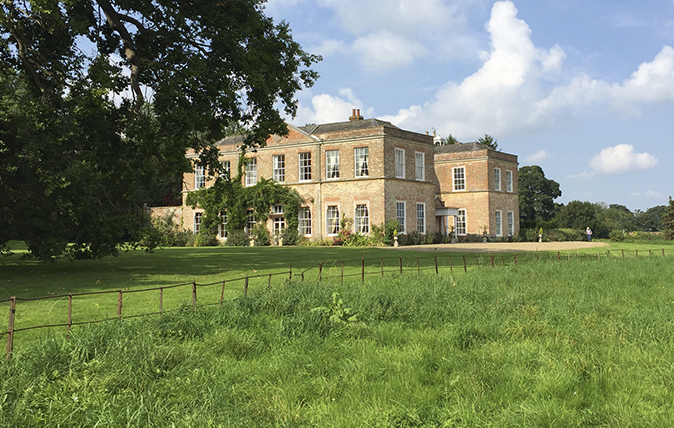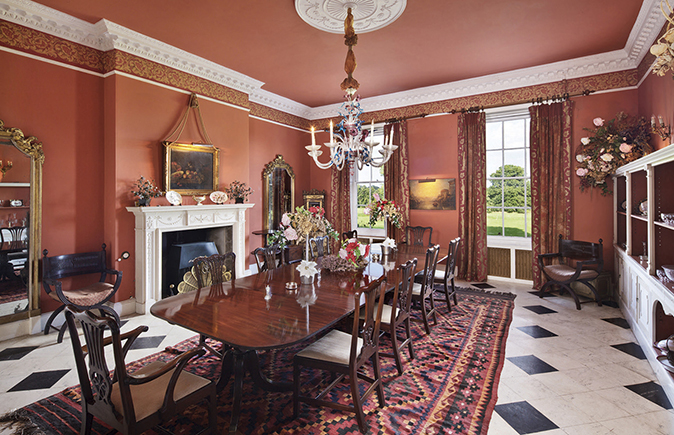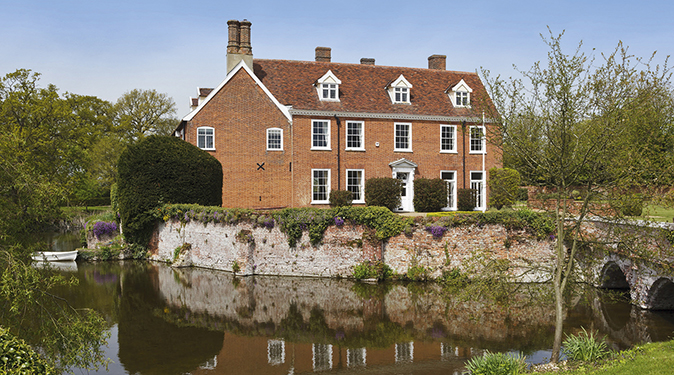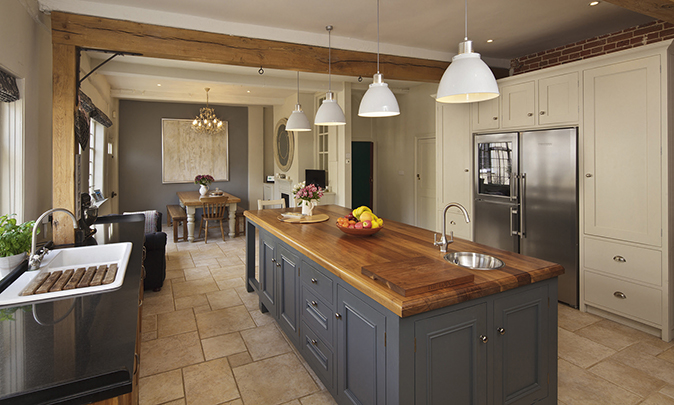Historic country houses for sale in Suffolk
Gentry, trees and City grandees.


The late Sir Paul Newall, well-known in the City of London as an indefatigable former international stockbroker, Lord Mayor of London and first Master of the Worshipful Company of International Bankers, once described his pastimes as fly-fishing, shooting, water-skiing and ‘trees’. Sir Paul’s passion for the latter is evident throughout his wonderfully secluded Grove Park estate at Yoxford, near the Suffolk heritage coast, which was his family’s cherished country retreat from the late 1970s until his death last year and whose 30-odd acres of historic parkland boasts an established belt of magnificent trees around its entire perimeter and elsewhere throughout the property.
Grove Park, listed Grade II, is now for sale through the Ipswich office of Savills (01473 234831), at a guide price of £3.75 million and one of the concerns expressed by Lady Newall is that a future owner might not appreciate the significance of one of her late husband’s favourite trees—a young cedar of Lebanon presented to him by the Lebanese ambassador in recognition of his efforts to promote British banking in that part of the world.
The charming east Suffolk village of Yoxford, 25 miles north of Ipswich, and eight miles from the coastal towns of both Southwold and Aldeburgh, is easily commutable from London, yet a world away from the hustle and bustle of city life. According to local records, the village, whose name means ‘a ford where oxen can pass’, stands on the old road from Ipswich to Lowestoft and Yarmouth, in a well-wooded district known as the Garden of Suffolk and ‘is surrounded by a beautiful country, interspersed with many gentlemen’s seats’. Among them is Grove Park, described in the early 1900s as ‘an ancient brick mansion surrounded by pleasure gardens and a well wooded park’.
According to its listing, Grove Park dates from the late 16th century and was rebuilt in the 1770s by Eleazar Davy, who, despite coming from a humble farming background, worked his way up the social ladder, becoming High Sheriff of the county in 1770. Shortly afterwards, he bought Grove Park (then known as The Grove) and developed it into his ‘Mansion House’, possibly to the designs of James Wyatt; at about the same time, he had his portrait painted by Gainsborough.
Having no children, he left his entire estate, including The Grove, to his nephew, David Elisha Davy, a Suffolk antiquarian, who, in turn, left the property to his sister Lucy on his death in 1851. From the late 1800s, Grove Park was owned by the Lomax family, who were successful barristers in London and Suffolk.
In the 20th century, the mansion was sold a number of times, before Sir Paul and Lady Newall bought it in 1978. Lady Newall’s mother, the formidable Dame Paddy Ridsdale, worked with Ian Fleming in the directorate of naval intelligence during the Second World War and was the inspiration for Miss Moneypenny.

According to selling agent Tom Orford of Savills, the Newalls carried out a thorough renovation ‘at the outset’ of the 14,000sq ft house and gardens, including the lovely walled kitchen garden with its orangery and greenhouse. Approached via a long gravelled driveway, Grove Park, now somewhat elegantly faded, overlooks its splendid park and has accommodation on three floors, including a self-contained ground-floor wing, and a second-floor nursery wing with a playroom and kitchen.
Sign up for the Country Life Newsletter
Exquisite houses, the beauty of Nature, and how to get the most from your life, straight to your inbox.
The ground-floor reception rooms —all light and well-proportioned, with high ceilings—include entrance and reception halls, four principal reception rooms, a conservatory and a study. In all, there are nine main bedrooms, three secondary bedrooms and five bathrooms.
A few miles west of Yoxford along the A1120, Jackson-Stops & Staff (01473 218218) quote a guide price of £2.5m for another historic Suffolk gem, the Grade II*-listed Earl Soham Lodge, in the village of that name, 3½ miles from Framlingham and 14 miles from Ipswich.

Built on one of about 6,000 moated sites in England, which were primarily designed as prestigious manorial residences with the moat intended as a status symbol rather than a military defence, Earl Soham Lodge was probably built as a hunting lodge by the Dukes of Norfolk and Suffolk on their Framlingham estate, which was sold to John Cornwallis by Thomas Howard, Earl of Suffolk, in about 1600. Its listing maintains that the former manor is 16th century on the left-hand side and to the rear, with a front range added by the Cornwallis family in 1789 and a rear wing added in the early 1900s.
In an interesting parallel with the history of Grove Park, the park of Earl Soham Lodge is scattered with ancient oak trees, whose strength and toughness is legendary and whose contemporaries were widely used by the British navy to build their warships. In fact, the village itself was always noted for the size of its magnificent timber and local folklore has it that, in 1670, a single oak tree was large enough to be made into a sizeable dwelling house.
Set within the impressive moat, a registered national monument in its own right, and approached over a twin-arched bridge, Earl Soham Lodge, with its handsome Georgian façade, is surrounded by 7.6 acres of part-walled and moated gardens, with open grounds leading to the oak parkland and medieval fish ponds beyond.

Inside the house, which was substantially renovated by the previous owner some 10 years ago—and more recently by the present vendor—7,918sq ft of coolly elegant accommodation includes a superb panelled Tudor drawing room overlooking the moat, two classically proportioned, high-ceilinged Georgian reception rooms set either side of a galleried reception hall and an impressive, 33ft-long kitchen/breakfast room. Set off the former service hall is a panelled morning room with French windows opening onto the gardens.
The focal point of the first floor is a spacious library landing overlooking the rear courtyard, off which are arranged six main bedrooms, three bath/shower rooms and a large master bedroom with a new bath/shower room. A further eight former staff rooms on the second floor could be refurbished to provide further bedroom accommodation if required.
Finally, a range of well-screened former farm buildings nearby houses a number of small businesses that are separately owned and include a vet’s practice, a dog-grooming centre and a chiropractor. The current owners report that they ‘have never found the businesses to be intrusive and have found them to be rather handy’.
-
 The King's favourite tea, conclave and spring flowers: Country Life Quiz of the Day, April 22, 2025
The King's favourite tea, conclave and spring flowers: Country Life Quiz of the Day, April 22, 2025Tuesday's Quiz of the Day blows smoke, tells the time and more.
By Toby Keel Published
-
 London is the place for me* (*the discerning property buyer)
London is the place for me* (*the discerning property buyer)With more buyers looking at London than anywhere else, is the 'race for space' finally over?
By Annabel Dixon Last updated
